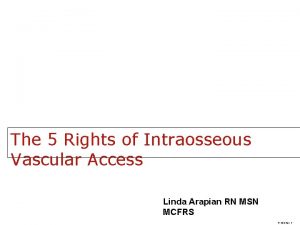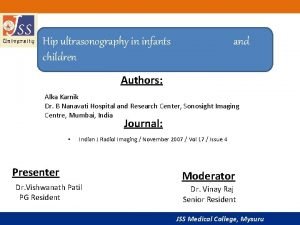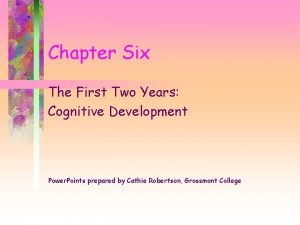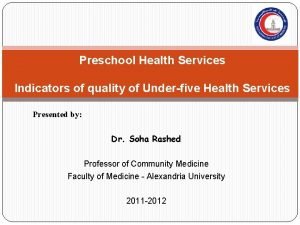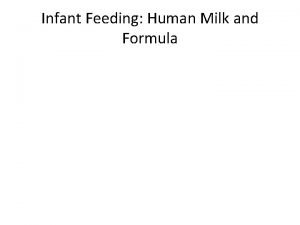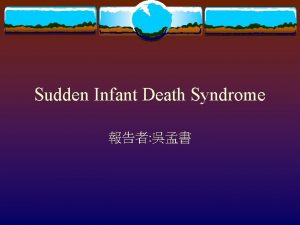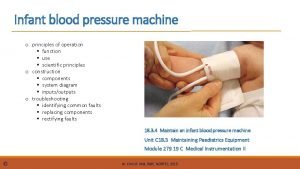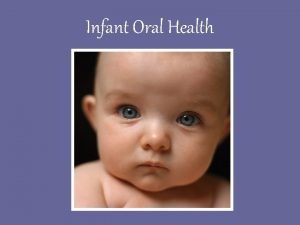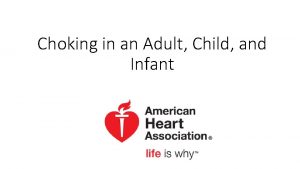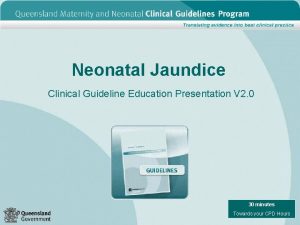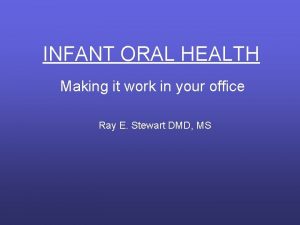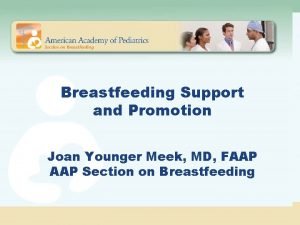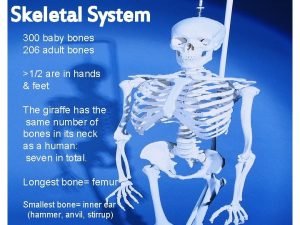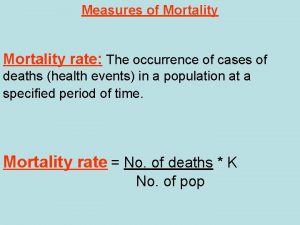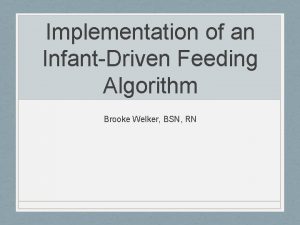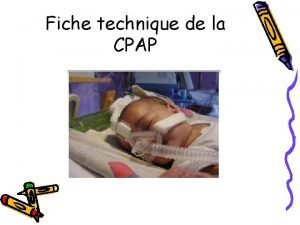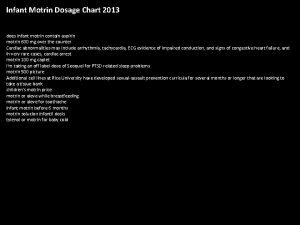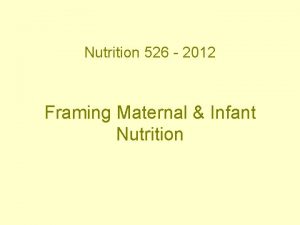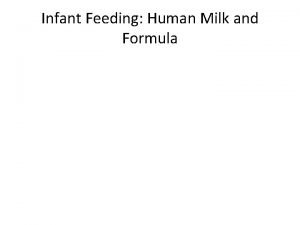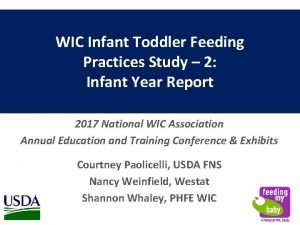Nutrition Through The Ages Infant Nutrition 0 12













































































- Slides: 77


Nutrition Through The Ages…

Infant Nutrition: 0 -12 months • Good nutrition is essential for infants. • During first year, infants grow and develop faster than at any other time. • For their size, infants require more calories.

Nutrient Needs for Infants • Calories – High-calorie needs based on body weight. – Infants gain weight very quickly. • Protein – Critical for infant growth. – Infants who breastfeed or drink recommended amount of formula consume adequate protein.

Nutrient Needs for Infants • Fat – Do not limit for children under 2. – Needed to support an infants’ rapid growth. – More than 50% of calories should come from fat. • Vitamins and minerals – Vitamin and mineral needs are based on the average amount consumed by thriving infants’ breastfed by well-nourished mothers.

Infant’s First Food • For the first 4 -6 months an infant’s nutritional needs can be met by breast milk, infant formula or a combination. • Breast milk or formula should continue throughout the first year of life.

Introducing Solid Foods • Signs that infant is ready for solid foods: – Sits with little support – Shows interest in food – Can move foods from the front to the back of the mouth – Can turn away to signal “enough”

Introducing Solid Foods – Generally start at 4 -6 months with iron-fortified, single-grain infant cereal (rice). – Strained baby meats, vegetables and fruits; 100% fruit juices; plain toast and teething biscuits – 7 -9 months. – Chopped soft fruits and vegetables; meats; unsweetened dry cereals plain; soft bread; and pasta – 10 -12 months.

Birth to 1 Year • Introduce challenge of drinking from sippy cup around 6 to 9 months. • Limit amount of juice (AAP does not recommend juice for infants under 6 months and no more than 6 ounces a day for older infants. • One by one, offer a variety of foods to baby. • Begin with single foods. • Plain tastes best. • Increase amount of solid foods as baby grows.

Toddler Nutrition: 12 months – 2 years • Adequate nutrition is necessary for toddlers to achieve their full growth and developmental potential

Transition to Table Food • Introduce new table foods slowly and add only one food at a time. • Finger foods can help in the transition from pureed foods to table foods. • Nutritious snacks should be used instead of sweetened beverages, snack foods or desserts.

Toddlers and Preschoolers • Set a schedule. • Keep serving sizes “child friendly. ” – Rule of thumb = 1 tablespoon of food per year of age. • Listen to children’s hunger cues. • Avoid forcing membership into the “clean-plate club. ” • Learn about the feeding relationship between parents and child. • Lifetime eating habits and attitudes are formed during these early years of childhood.

Nutrient Needs of Toddlers • Appetite – Toddler’s growth rate slows, which results in decreased appetite and interest in food. – It is important to understand a decreased appetite is normal. – Toddlers can self-regulate their calorie intake.

My. Pyramid • Providing variety of foods by following My. Pyramid every day is best assurance of getting adequate calories, vitamins and minerals needed. • Recommendations for My. Pyramid are only for individuals 2 years and above. • My Pyramid Plan based on 1, 000 calories for toddler 2 years of age: – – – – Grains – 3 ounces (1. 5 ounces whole grains) Vegetables – 1 cup (2 servings) Fruit – 1 cup (2 servings) Milk – 2 cups Meat & Beans 2 ounces Oils – 3 teaspoons daily Extra Fats & Sugars - limited

Choking • Concern during transition from strained foods to regular table foods. • Foods that are hard, tough to chew, small and round or sticky are most often choked on, unless the shape or texture can be modified. Hot dogs Whole grapes Tough stringy meats Hard, raw vegetables Chunks of meat Popcorn Fish with bones Small or hard candies Peanut butter Jelly beans Nuts Gum Hard raw fruits Gummy textured candy Marshmallows Raisins

Preventing Overweight in Infants and Toddlers • Avoid overfeeding. • Do not force infants to eat. • Wait until 4 -6 months before adding solid foods. • Limit juice to 3 -4 ounces. • Do not use food as a reward. • Encourage physical activity.

School-age Nutrition Needs – Follow My. Pyramid. – 6 -11 year olds need 1, 200 to 2, 200 calories depending on age, gender and activity level. • In general, boys require slightly more than girls and active kids require more than inactive kids. Grains Vegetables Fruits Milk Meat/Beans 1, 200 4 oz. 1. 5 cups 1 cup 2 cups 3 oz. 1, 400 5 oz. 1. 5 cups 2 cups 4 oz. 1, 600 5 oz. 2 cups 1. 5 cups 3 cups 5 oz. 1, 800 6 oz. 2. 5 cups 1. 5 cups 3 cups 5 oz. 2, 000 6 oz. 2. 5 cups 2 cups 3 cups 5. 5 oz. 2, 200 7 oz. 3 cups 2 cups 3 cups 6 oz.

School Age Nutrition Needs • Children need to make their own food decisions • Breakfast – A well-nourished child is ready to learn. – Regular breakfast skipping is linked to less school achievement and performance. – Kids who eat breakfast are less likely to be overweight and more likely to get enough calcium. • Beating the time barrier – Keep quick-to-fix healthy foods on hand: ready-toeat whole-grain cereals, bagels, toaster waffles and breads; yogurt, fresh fruit, low-fat milk and cheeses, peanut butter.

School-age Nutrition Needs • The Vegetable Challenge • Add veggies to kid favorites. • Fortify ready-to-eat soup with extra vegetables or canned beans. • Offer raw finger-food veggies. • Serve vegetables with bright colors and crisp texture. • Start a “veggie club. ” • Nothing works – offer more fruit.

Snacks • Important part of a balanced diet for a child. • Growing kids need extra energy during the day to support growth and development. • Planning can help ensure that snacks eaten will be healthier ones. • Can cut down on feelings of hunger and less likelihood of overeating at mealtimes. • Keep serving sizes in mind as well as nutrient density. • Keep in mind to choose that are low in fat, added sugars and calories.

Healthy Snack Choices • • Low-fat milk Low-fat yogurt with fruit String cheese Instant pudding made with nonfat milk Frozen fruit bars Fresh fruit Individual servings of applesauce or fruit Raisins • Cut-up fresh vegetables with low-fat salad dressing • Baby carrots • Graham crackers • Pretzels • Dry cereal • Vanilla wafers • Animal crackers • Plain popcorn

Picky!!! – Relax. Picky eating is often a normal phase. – Kids sometimes need 10 or more exposures to a food before they will take their first bite. – Recognize importance of family meals. – Kids need positive role models for healthy eating and physical activity. – Prepare foods in a variety of ways.

Picky!!! – Involve kids in food-related activities. – Catch kids when they are hungry. – Make sure there are plenty of healthy choices available. – Encourage kids to drink water when thirsty. – Keep regular checks on growth. – Daily multivitamin/mineral supplement? ?

Unplug Kids – 60 minutes of activity most days is recommended • • • Walking Bike riding Skating or skate boarding Playing basketball or soccer Swimming Jumping rope – Reduce time spent with the television, computer or video games

Slim Down an Overweight Child – Seek professional advice. – Encourage activity and participate with them. – Avoid severe food restrictions or fad diets. – Offer lower fat, lower calorie foods all the time – meals and snacks. – Tailor portion sizes for the child not an adult. – Make meals and snacks enjoyable. – Avoid labeling foods as “good” or “bad. ”

Slim Down an Overweight Child – Teach to eat slowly and chew food well. – Set time limits on TV, computer or video games. – Make a house rule – eat only in the kitchen or dining room. – Talk to child about his or her feelings. – Be aware that sometimes kids say they’re hungry when they’re really bored or looking for attention. • Offer a snack like an apple, crackers or even a glass of water.

Adolescence • Estimated daily calories for teens 14 -18 – Girls = 1, 800 to 2, 400 (inactive → active) – Boys = 2, 200 to 3, 200 (inactive → active) Grains Vegetables Fruits Milk Meat/Beans 1, 800 6 oz. 2. 5 cups 1. 5 cups 3 cups 5 oz. 2, 000 6 oz. 2. 5 cups 2 cups 3 cups 5. 5 oz. 2, 200 7 oz. 3 cups 2 cups 3 cups 6 oz. 2, 400 8 oz. 3 cups 2 cups 3 cups 6. 5 oz. 2, 800 10 oz. 3. 5 cups 2. 5 cups 3 cups 7 oz. 3, 200 10 oz. 4 cups 2. 5 cups 3 cups 7 oz.

Apples, Pretzels and Ice Cream • Teens are typically missing certain nutrients in their daily diets. • The 3 most important ones are – Calcium. – Iron. – Zinc.

Calcium • Function – Gives strength to bones and teeth – Helps your muscles contract – Helps blood to clot • Food Sources – Milk, yogurt, cheese, ice cream, frozen yogurt, foods made with mild or other dairy products – Orange juice fortified with calcium, dark green, leafy vegetables, broccoli, soybeans, canned fish with bones like salmon and sardines • How much is needed a day? – 1, 300 mg a day – No more than 2, 500 mg a day

Calcium • How do you know how much calcium a food has? – Look at the % daily value next to calcium on the food label – Try to eat and drink foods with 20% or more DV for calcium • Only 14% of girls and 36% of boys age 12 to 19 get enough calcium every day

Calcium • Typical amounts of calcium found in foods – – – – – 1 cup of milk, whole or low-fat 1 ½ oz. cheddar cheese 1 cup low-fat fruit yogurt 1 cup orange juice, calcium fortified 3 oz. canned salmon ½ cup pudding ½ cup frozen yogurt ½ cup ice cream ½ cup broccoli 300 mg 205 150 105 85 45

Solving the Calcium Crunch • Think of ways to incorporate milk and other calcium foods into meals and snacks. • Keep foods with calcium in the house and put them on the table during meals and snacks. • Keep drinking milk throughout life. • Lay off soft drinks as much as possible – they pull calcium and phosphorous from bones.

Ideas for High-Calcium Snacks • • • Milk or flavored milk beverage Frozen yogurt Low-fat cheese cubes and pretzels Mini pizzas Fruit flavored yogurt You name a few - - -

Iron • Function – Forms hemoglobin, which carries oxygen in blood – Helps prevent infection and anemia – Helps body use food for energy • Food sources – – Meat, poultry, eggs Dried fruit Fortified breads and cereals Dark green vegetables • How much is needed each day? – 15 mg each day for girls – 11 mg each day for boys

Counting Up Iron • • • 3 oz. beef liver 3 oz. lean ground beef 3 oz. chicken 1 cup fortified cereal ½ cup red kidney beans 1 oz. pretzels 5. 8 mg 1. 8 1. 0 4. 5 – 18 2. 6 1. 3

Spiking Iron Absorption • To increase the absorption of iron – Eat or drink a source of vitamin C with iron food sources. – Don’t drink tea with iron foods – it decreases the absorption. • 17% of all adolescent girls are anemic. – Tired, pale, hands stay cold, nail beds turn blue, catch infections quickly.

Ideas for High-Iron Snacks • • Dried fruits like apricots, bananas, raisins, cranberries Pretzels or other enriched-grain products Nuts You name a few - - -

Zinc: Also Essential • • Often comes up short for teens. Essential for growth and sexual maturation. Food sources: meats and animal-based foods. Lack of zinc may affect development.

Fast Food • 2 -3 fast-food meals a week. • More schools are serving fast foodtype meals. • Usually very high in fat and sodium. • Children develop a taste preference for highfat and high-sodium foods. • Look at nutrition and make healthier choices. – Side salad vs. fries. – Grilled chicken sandwich vs. burger. – Low-fat milk vs. regular soft drink.

Nutrition for the Older Adults

Dietary Quality… • Dietary quality plays a major role in preventing or delaying the onset of chronic diseases. • Older persons living in poverty are not as likely to have a healthy diet.

Eating for Healthy Aging. . . • Older adults need protein, carbohydrate, fat, vitamins, minerals and water. • Getting enough of the nutrients may be challenging. • Some nutrients that may require special attention: - Vitamin D, vitamin C, iron, vitamin A, folic acid, vitamin B-12, zinc and water.

Energy: Spending Calories Wisely. . . • Most elderly use less energy or calories. • Need the same amount of nutrients but few calories. • Choose nutrient-dense food. • Most need about 1, 600 calories daily. • No more than 30% of calories from fat. • Most energy should be obtained from complex carbohydrates.

Protein: An Issue for Some. . . • Need 2 servings of food from the Meat and Bean Group. • Elderly may have a problem chewing protein-rich food. • Elderly may have a problem digesting protein food. • Limited-income might avoid meat, poultry or fish because they often cost more than many other foods.

How to get enough protein. . . • If on a budget – keep portions small or stretch in a casserole dish. • Consider other less expensive sources. • Chop meat or poultry well, if need to. • Trouble chewing – have teeth or dentures checked. • Include dairy products.

Calcium: As Important As Ever. . . • Calcium needs go up as we get older. • To help maintain bone mass, calcium recommendations increase by 20%. • Men and women need 1, 200 mg calcium daily. • Risk for osteoporosis goes up with age. • Many elderly don’t consume enough calcium-rich foods.

• Many elderly don’t get enough weightbearing exercise like walking or strength training. • Milk, cheese and yogurt – best source of calcium. • Other sources – dark green, leafy vegetables, fish with edible bones and tofu made with calcium.

Vitamin D: The Sunshine Vitamin. . . • • Calcium and vitamin D are partners. Helps deposit calcium into bones. Helps to protect us from bone disease. Body makes vitamin D after sunlight hits the skin. • As we age, our bodies don’t seem to make vitamin D from sunlight as easily. • Need for vitamin D goes up after 50.

The Iron-Vitamin C Connection • Vitamin C helps the body absorb iron from plant sources of food. • Poor diet may lead to deficiency in one or both of the nutrients. • To avoid iron-deficiency: – Choose economical sources of iron. – Add vitamin C food to meal to boost iron absorption. – Add meat fish or poultry to grain-based meals.

Thirst-Quenchers. . . Drink Fluids • Adults use up abut 2 ½ quarts of fluids a day. • Thirst is body’s signal to drink more. • With age, sense of thirst diminishes. • Elderly may not be able to count on thirst as a reminder to drink fluids. • As we age, kidneys do not conserve fluids as they once did. • Elderly may deliberately avoid fluids.

Water and the Health Connection. . . • Dehydration common problem among elderly. • Less fluids – chances of constipation rises. • Drinking liquids at meals makes eating easier. • Taking medication – drinking water has an important role. • Older adults need 8 to 12 cups.

Warning Signs of Poor Nutritional Health. . . • I have an illness or condition that made me change the kind and/or amount of food I eat. • I eat fewer than 2 meals per day. • I eat few fruits or vegetables or milk products. • I have 3 or more drinks of beer, liquor or wine almost every day.

• I have tooth or mouth problems that make it hard for me to eat. • I don’t always have enough money to buy the food I need. • I eat alone most of the time. • I take 3 or more different prescribed or over-the-counter drugs a day. • Without wanting to, I have lost or gained 10 pounds in the last 6 months. • I am not always physically able to shop, cook and/or feed myself.

D E T E R M I N E Your Nutritional Health. . . D isease. . . – Any disease that puts your nutritional health at risk: 4 out of 5 have chronic diseases that are affected by diet. – Confusion or memory loss that keeps getting worse: affects 1 out of 5. – Feeling sad or depressed: affects 1 in 8 older adults.

E ating Poorly. . . - Eating too little or eating too much. - Eating the same foods day after day. - Not eating fruits, vegetables and milk products daily. - Skipping meals: 1 in 5 adults skip meals daily. - 1 in 4 older adults drink too much alcohol.

T ooth Loss/Mouth Pain. . . - Healthy mouth, teeth and gums are needed to eat. - Missing, loose or rotten teeth or dentures that don’t fit well can make chewing or swallowing painful.

E conomic Hardship. . . - 40% of older Americans have incomes of less than $6, 000 per year. - Having less. . . or choosing to spend less. . . than $25 -$30 per week for food makes it very hard to get food needed to stay healthy.

R educed Social Contact. . . - 1/3 of older Americans live alone. - Being with people daily has a positive effect on morale, well-being and eating.

M ultiple Medicines. . . - Almost ½ of older Americans take multiple medicines daily. - Elderly may respond differently to drugs. - The more medicine taken by the elderly the greater chance of side effects. - Vitamins and minerals taken in large doses acts like drugs and can cause harm. - Tell doctor everything taken.

I nvoluntary Weight Loss/Gain. . . - Losing or gaining weight when not trying is a warning sign that must not be ignored. - Being overweight also increases chance of poor health.

N eeds Assistance to Self-Care. . . - Most older people are able to eat. - 1 out of 5 elderly have trouble walking, shopping, buying and cooking food.

E lder Years Over 80. . . - Most older people lead full, productive lives. - As age increases, risk of frailty and health problems increase. - Check nutritional health regularly.

Eating Well As We Age. . . Staying Strong and Healthy

Problem: change in the kind and or amount of food eaten because of illness. • Adults need over 40 different nutrients each day to stay healthy and to be able to care for themselves. What to do… • Ask doctor if illness or drug taken each day make it hard to eat the foods needed. • Eat six small meals instead of three large ones. • Eat snacks between meals or before bed time. • Read food labels. • Keep food fixed and easily available.

Problem: Eating Fewer Than Two Meals a Day • As we age fewer calories are needed. • Still need same amount of (if not more) protein, vitamins and minerals. What to do… • Hard to cook. . . use frozen dinners, pre-cooked food or salad bar from grocery store. • Cook meals ahead. • “Eat out” at a senior center. • Share shopping and cooking duties with a friend or neighbor.

Problem: Eat Few Fruits, Vegetables or Milk Products • Fruits and vegetables are high in fiber, vitamins and minerals. • Milk and milk products contain calcium. What to do: • Buy only the amount needed. • Keep dried, canned or frozen fruit. • Add vegetables to soups, stews and other mixed dishes. • Look for low-fat dairy products.

• Use cheese sauce or dip to add flavor and calcium to fruits and vegetables. • Don’t like milk…eat cheese or yogurt. • Make a shake or sundae mixed with fruit and milk. • If milk or milk products cause gas or diarrhea, ask for help to prevent problems.

Problem: 3 or More Drinks of Beer, Liquor or Wine Almost Every Day. • Alcohol is high in calories and robs body of nutrients. • Can harm brain, heart, liver and other vital organs. What to do: • Drink in moderation. • Don’t mix drugs and alcohol.

Problem: Tooth or Mouth Problems That Make It Hard to Eat • Changing the kind of food eaten can sometimes help. What to do: • Eat food that is easy-to-chew. • Chop or grind food. • Add gravy or sauce to make it moist. • Eat thick soups, fruit smoothies and milkshakes. • Use medical nutritional products. • Eat hot cereals.

Problem: No Appetite • Loneliness can make you lose your appetite. • May not feel like fixing meals for self. • Food has no flavor or tastes bad. • What to do: • • • Eat with family or friends. Take part of group meal programs. Increase flavor by adding spices and herbs. If medicine is the problem ask to have it changed. Serve food hot…get digestive juices flowing.

Problem: Short on Money What to do. . . • Buy low-cost foods – dried beans, peas, rice and pasta. • Or buy foods containing these items. • Use coupons for money off on foods you like. • Buy foods on sale or store-brand foods. • Find out what organization offers free or low-cost meals. • Take part in group meal program. • Get food stamps.

Problem: Eat Alone Most of the Time • Seniors often eat snacks rather than a meal. • Snacks may be high in salt, sugar and fat. What to do: • Join a senior center that offers meals. • Watch TV while you eat. • Share meals with a friend.

Problem: Take 3 or More Different Prescribed or Over-the-Counter Medicines Daily • Medicines may increase or decrease the appetite. • May change the way food taste or smell. • May affect need for vitamins or minerals. • Can result in a person not getting enough food and fluids. What to do: • Ask if drugs can affect eating habits. • Make sure to understand when and how to take the medicine.

• Never take someone’s else’s prescription drugs. • Buy all the drugs in the same place. • Let doctor know of changes in weight, appetite, sense of taste or smell, energy level or sleeping habits.

Problem: Lost or Gained 10 Lb. in Last 6 Months • Keeping weight stable is a sign of good health. What to do: • Always tell doctor about weight change. • Ask for help in planning meals to meet health needs. • Don’t use “fat diets” or herbal cures.

References • Complete Food and Nutrition Guide by the American Dietetic Association Prepared by: Terri Crawford Extension Agent (Nutrition) Northeast Region

 Why are the middle ages called the dark ages
Why are the middle ages called the dark ages Dark ages vs middle ages
Dark ages vs middle ages Technology through the ages
Technology through the ages Chapter 7 early childhood ages 3 through 5
Chapter 7 early childhood ages 3 through 5 Literary archetypes
Literary archetypes The embryo gets nutrition from mother through
The embryo gets nutrition from mother through Nutrition through life cycle
Nutrition through life cycle Through one man sin entered the world, and through one man
Through one man sin entered the world, and through one man Dome of furcation
Dome of furcation Tangent-sawing
Tangent-sawing Nissim ezekiel night of the scorpion
Nissim ezekiel night of the scorpion Keeping an infant safe and well section 7-3
Keeping an infant safe and well section 7-3 Phoenix infant academy
Phoenix infant academy Femoral pulse in child
Femoral pulse in child Ilfeld brace
Ilfeld brace Infant io placement
Infant io placement Saguaro infant care and preschool
Saguaro infant care and preschool Alpha and beta angle in ddh
Alpha and beta angle in ddh Infant industries apush
Infant industries apush Crvs institute panel
Crvs institute panel Infant reflexes chart
Infant reflexes chart Infant industry
Infant industry Ernest hemingway baby shoes
Ernest hemingway baby shoes Verbal pain assessment
Verbal pain assessment Social impulses foster infant language
Social impulses foster infant language Cbr definition ap human geography
Cbr definition ap human geography High quality cpr child
High quality cpr child Hart plain infant school
Hart plain infant school Personality development in infants
Personality development in infants Paul shakespeare headteacher
Paul shakespeare headteacher Infant mortality rate formula
Infant mortality rate formula Primitive reflexes chart
Primitive reflexes chart Neonatal mortality rate
Neonatal mortality rate Walter infant
Walter infant Dormers wells infant school
Dormers wells infant school Gos infant formula
Gos infant formula Sparhawk infant school
Sparhawk infant school Woolston infant school
Woolston infant school Llf in first aid
Llf in first aid Livedo mortis
Livedo mortis Infant blood pressure
Infant blood pressure Infant
Infant Infant
Infant Types of jaundice pdf
Types of jaundice pdf Social impulses foster infant language
Social impulses foster infant language Discontinuous development psychology
Discontinuous development psychology Infant oral health care
Infant oral health care Governance
Governance Drdp preschool essential view
Drdp preschool essential view Weight gain in infant
Weight gain in infant Cone of experience
Cone of experience Module 45 developmental issues
Module 45 developmental issues Pediatric life support algorithm
Pediatric life support algorithm Wood street infant school
Wood street infant school Infant/toddler sensory profile score sheet
Infant/toddler sensory profile score sheet Maternal and infant health disparities
Maternal and infant health disparities An infant's growth refers to changes in
An infant's growth refers to changes in Transport incubator
Transport incubator Convent of holy infant jesus
Convent of holy infant jesus Baby bones vs adult bones
Baby bones vs adult bones Mortality rate formula
Mortality rate formula Downs view infant school
Downs view infant school Infant age
Infant age Brigance test for 2 year old
Brigance test for 2 year old Woodfield infant school
Woodfield infant school Brooke welker
Brooke welker Catherine maguire infant mental health
Catherine maguire infant mental health Infant flow driver
Infant flow driver Infant-industry argument
Infant-industry argument Compression to ventilation ratio adults
Compression to ventilation ratio adults Hhs
Hhs Juan soriano la niña muerta; the dead girl; dead infant
Juan soriano la niña muerta; the dead girl; dead infant Vastus lateralis injection site
Vastus lateralis injection site Infant mortality rate formula
Infant mortality rate formula Embrace infant warmer
Embrace infant warmer Coupon para fiorinal
Coupon para fiorinal Pregnancy and infant cohort monitoring and evaluation
Pregnancy and infant cohort monitoring and evaluation Botulism symptoms
Botulism symptoms















